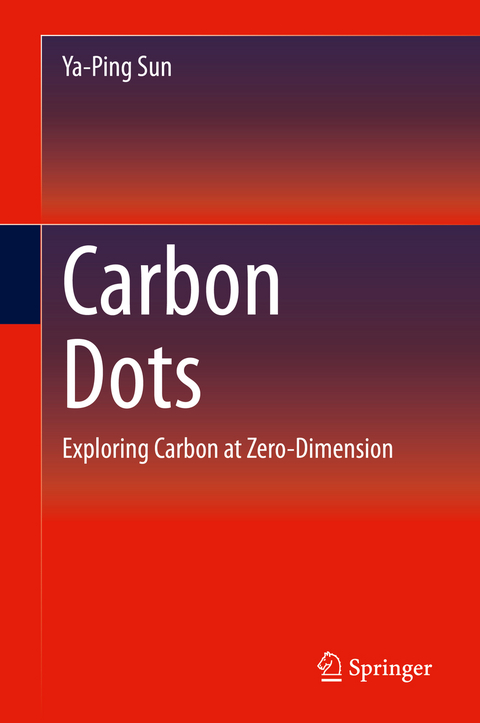
Carbon Dots
Springer International Publishing (Verlag)
978-3-030-41183-1 (ISBN)
Written by the founder of the field of carbon "quantum" dots (carbon dots) and related technology, this book outlines the principles of carbon dots and presents strong evidence for that small carbon nanoparticles and by extension carbon dots represent the nanoscale carbon allotrope at zero-dimension. Historical accounts of the inception and evolution of the carbon dots field are provided. Experimental approaches and techniques for the dot synthesis and some related major issues are discussed in detail. The photoexcited state properties, especially the bright and colorful photoluminescence emissions, and photoinduced redox characteristics of carbon dots are presented, and so are their advantages over semiconductor quantum dots as well as fullerenes. Carbon dots are also compared with "graphene quantum dots", for which a unified mechanistic understanding is proposed. Finally, a broad range of applications of carbon dots and their derived hybrid nanostructures in biomedical, renewableenergy, food and environmental safety, and other technologies are highlighted. The book concludes with a discussion on the excellent potential and opportunities for further research and development.
Dr. Sun received his B.Eng. (1982) from the Zhejiang Institute of Technology and his M.S. (1985) from the Zhejiang University, both in Hangzhou, China. He earned his Ph.D. (1989) at the Florida State University with Prof. Jack Saltiel. He was a postdoctoral fellow with Prof. Josef Michl (1989-91) and Prof. Marye Anne Fox (1991-92) at the University of Texas at Austin. He joined the Clemson faculty as an assistant professor in 1992, was promoted to associate professor with tenure and full professor in 1996 and 1999, respectively, and became an endowed chair professor in 2003. Carbon dots were found by Sun research group at Clemson University, and were reported (after patent applications) in a 2006 paper. Since then, the research field of carbon dots has emerged, and the field has been advancing and expanding rapidly, as has been made evident by the fact that the aforementioned paper has been cited for more than 2,700 times.
Introduction.- Background Knowledge.- Carbon Dots.- Carbon-based Quantum Dots.- Technological Applications.- Further Opportunities.
| Erscheinungsdatum | 03.04.2020 |
|---|---|
| Zusatzinfo | VIII, 209 p. 154 illus., 96 illus. in color. |
| Verlagsort | Cham |
| Sprache | englisch |
| Maße | 155 x 235 mm |
| Gewicht | 487 g |
| Themenwelt | Technik ► Maschinenbau |
| Schlagworte | Bioimaging • Carbon-based Quatum Dots • Carbon Quantum Dots • C-Dots • CDots • GQDs • Graphene Quantum Dots • nanomaterials • Nontoxic Quantum Dots |
| ISBN-10 | 3-030-41183-4 / 3030411834 |
| ISBN-13 | 978-3-030-41183-1 / 9783030411831 |
| Zustand | Neuware |
| Haben Sie eine Frage zum Produkt? |
aus dem Bereich


